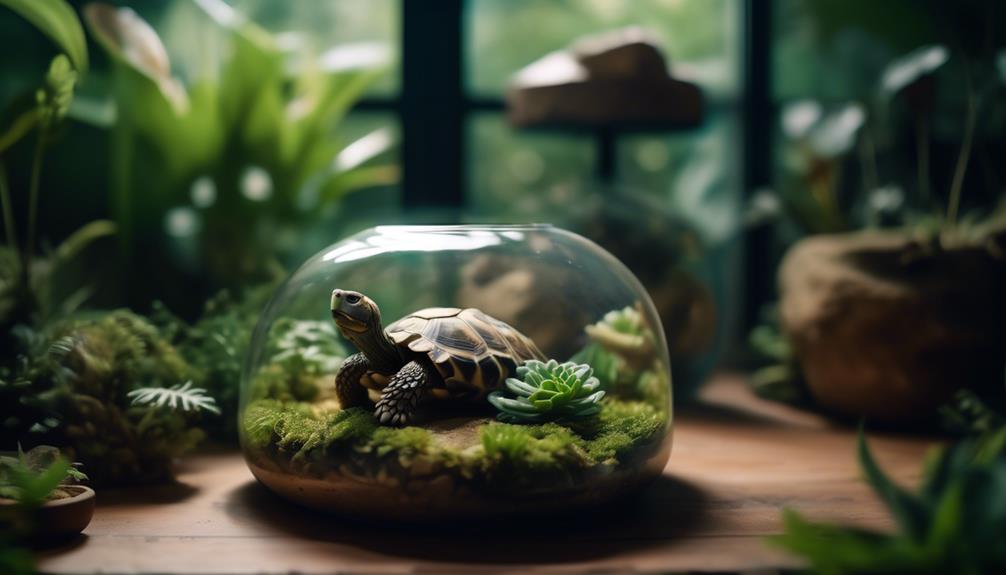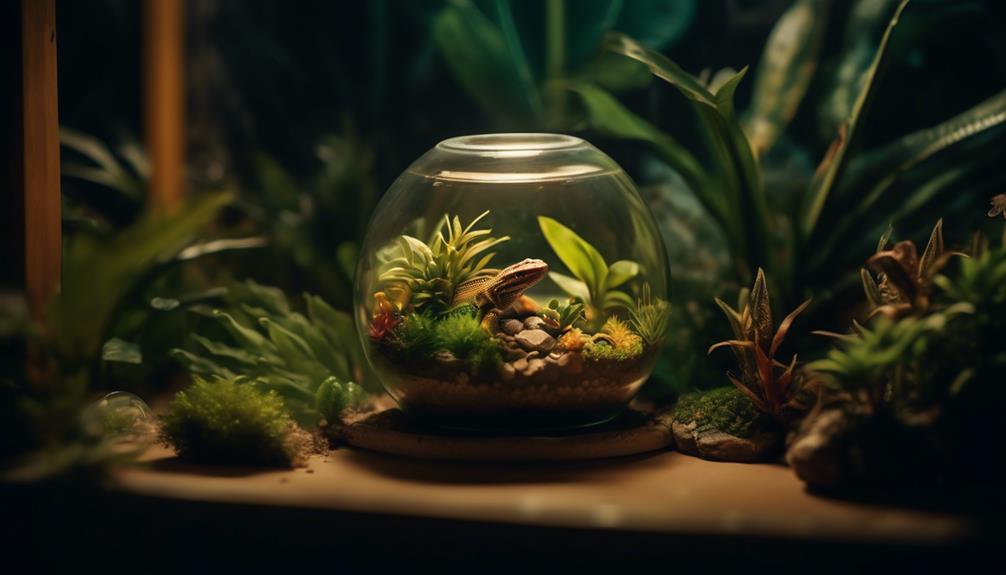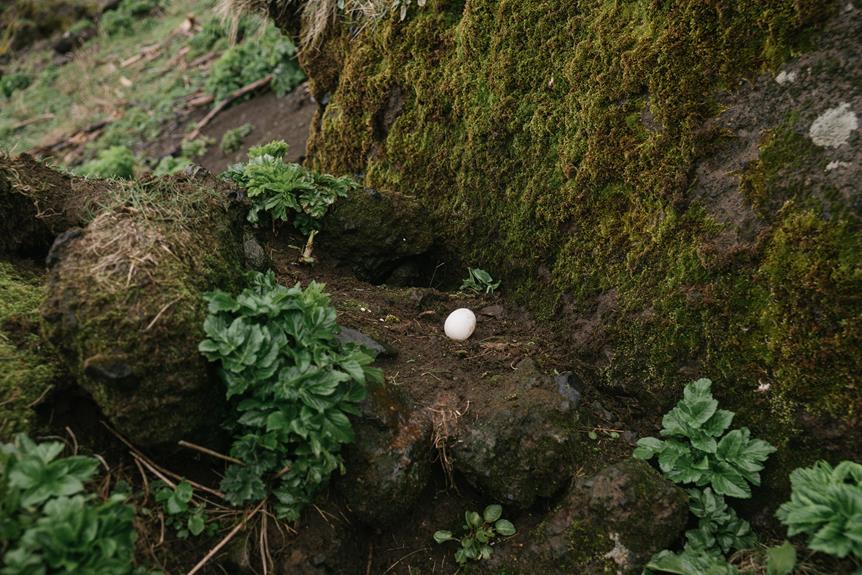Ready to dive into the world of pancake tortoise care? In this article, we'll take you on a journey through the essential aspects of mastering the art of caring for these unique creatures.
From creating the ideal environment and understanding their dietary needs to handling and ensuring their overall health, we'll cover it all.
But there's more to it than just that. We'll uncover some fascinating insights into their reproduction and lifespan, leaving you with a thirst for knowledge that only we can quench.
So, let's embark on this adventure together and unlock the secrets of pancake tortoise care.
Key Takeaways
- Pancake tortoises require spacious enclosures with appropriate dimensions and outdoor pens are recommended for adult tortoises.
- UVB lighting is essential for their health, and the recommended bulbs should be half the length of the enclosure and mounted on the same side as the heat lamp.
- Maintaining proper temperatures is crucial, with a basking surface temperature of 108°F under the heat lamp and a cool area between 70-75°F.
- Humidity levels should be monitored and adjusted accordingly, with higher humidity for juveniles and hatchlings, and access to a tight-fitting humid hide for hydration.
Housing and Environmental Requirements
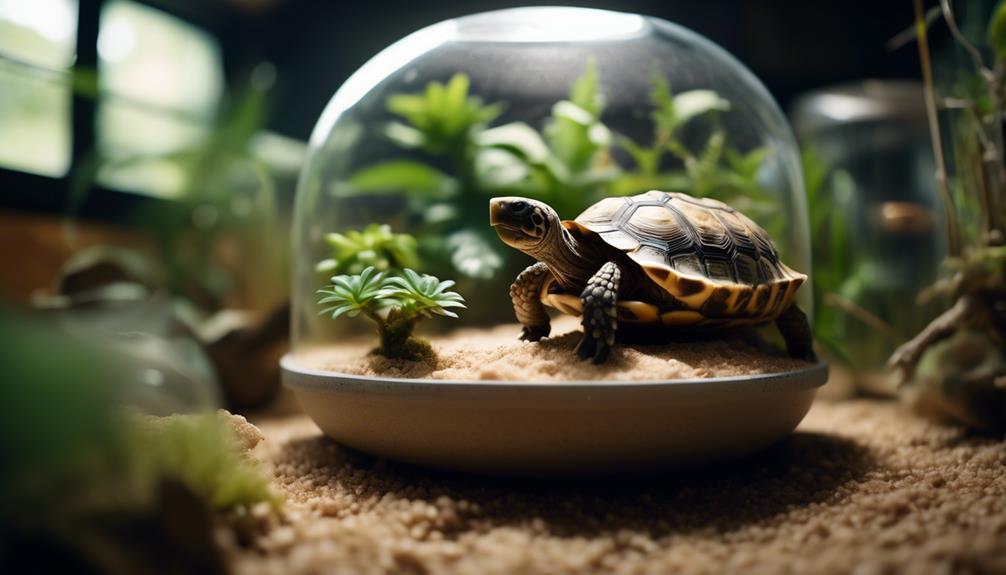
To ensure proper care for pancake tortoises, it's crucial to provide suitable housing and meet their specific environmental requirements.
When it comes to housing, there are two options to consider: outdoor and indoor.
Outdoor housing, such as pens, is recommended for adult tortoises as it provides them with larger space and natural elements. The walls of outdoor pens should be smooth and at least 24' high with a lip to prevent escape.
On the other hand, indoor housing can be achieved using plain topsoil mixed with play sand as substrate. The substrate should resemble sandy soil and be at least 3' deep.
In terms of humidity, adult tortoises can survive in low humidity levels, but access to higher humidity areas is beneficial. Juveniles and hatchlings, however, require higher humidity levels, ranging from 50-60% during the day to 80% at night. Humidity can be increased by regularly misting the enclosure. It's important to measure humidity using a digital probe hygrometer.
These housing and environmental requirements are essential for the well-being of pancake tortoises.
Diet and Nutrition
Moving on to the important aspect of pancake tortoise care, let's now explore their dietary needs and the essential elements of their nutrition.
Here are four key points to consider when it comes to the diet and nutrition of pancake tortoises:
- Safe greens, vegetables, and grasses: Grasses and weeds should make up 90% of their diet, while grocery store greens and vegetables can make up the remaining 10%. Safe options include mulberry, grape, and hibiscus leaves, as well as kale, collard greens, and squash.
- Importance of calcium and vitamin supplements: Calcium and vitamin supplements are necessary to promote proper growth and shell development. Consider incorporating Mazuri grassland tortoise formula or Zoo Med Natural Grassland Tortoise Food into their diet. Additionally, provide a cuttlebone or offer baked eggshells as a calcium source.
- Limited fruit consumption: While fruit can be offered sparingly as a treat, it shouldn't make up a significant portion of their diet. Stick to primarily greens, vegetables, and grasses for optimal nutrition.
- Adequate hydration: Water should be provided daily, and a shallow puddle can be offered for drinking. Ensure that fresh water is always available for your pancake tortoise to stay hydrated.
Handling and Interaction
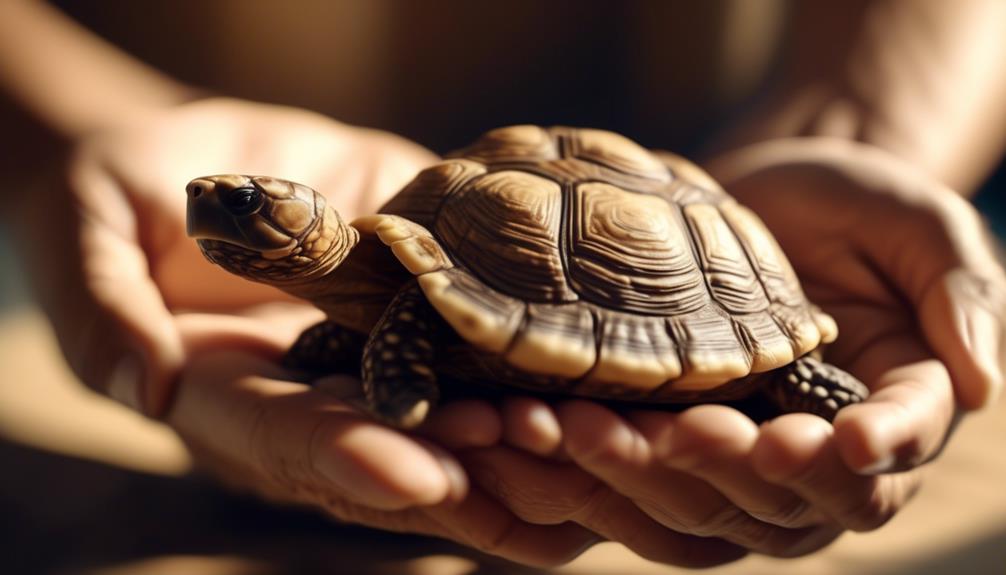
How should pancake tortoises be handled and interacted with in order to minimize stress and ensure their well-being?
Pancake tortoises are known to be sensitive creatures, so it's important to handle them with care and respect. Unnecessary handling should be avoided, as it can cause stress and anxiety.
Instead, try engaging in activities that provide mental stimulation and enrichment. Obstacle courses can be created using various objects and surfaces to encourage natural behaviors like climbing and exploring. Food puzzles are another great option, as they allow the tortoise to problem solve and work for their food.
Health and Veterinary Care
When it comes to ensuring the health and well-being of pancake tortoises, proper veterinary care is essential. Here are four preventive healthcare measures to keep in mind:
- Regular check-ups with a reptile veterinarian: Schedule routine visits to a veterinarian who specializes in reptile care. They can provide thorough examinations, offer advice on proper diet and habitat, and detect any potential health issues early on.
- Monitoring for signs of illness: Keep a close eye on your pancake tortoise for any changes in behavior, appetite, or energy levels. Loss of appetite, lethargy, or unusual behavior could be signs of an underlying health problem that requires medical attention.
- Maintaining a clean enclosure: Regularly clean and disinfect the tortoise's enclosure to prevent the build-up of bacteria or fungi that can cause infections. A clean environment is crucial for maintaining good health.
- Shell and skin care: Inspect the tortoise's shell regularly for any signs of damage or abnormal growth. Consult with a reptile veterinarian if you notice any issues. Additionally, maintaining proper humidity levels in the enclosure will help prevent respiratory issues and keep the tortoise's skin healthy.
Reproduction and Lifespan
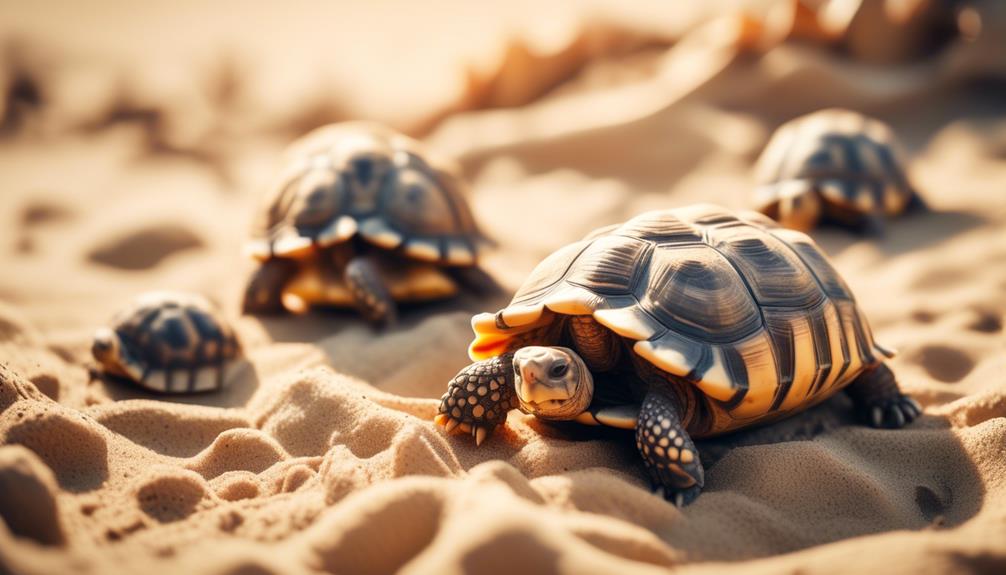
Regular check-ups with a reptile veterinarian and maintaining a clean enclosure are crucial for the health and well-being of pancake tortoises. It's also important to understand their reproduction and lifespan.
Pancake tortoises reach sexual maturity at around 5-7 years old. Females lay small clutches of 1-2 eggs per year, with an incubation period of approximately 70-90 days. When breeding pancake tortoises, it's important to provide appropriate nesting areas for females to lay their eggs.
The lifespan of pancake tortoises can range from 30 to 40 years, making them long-lived reptiles. Understanding their breeding habits and life expectancy will help tortoise owners provide the necessary care and create optimal conditions for successful reproduction and a healthy, fulfilling lifespan.
Frequently Asked Questions
What Are Some Common Behavioral Traits of Pancake Tortoises?
Pancake tortoises exhibit unique breeding habits, with females laying small clutches of 1-2 eggs per year. They are herbivorous, preferring a diet of grasses and weeds, with grocery store greens and vegetables as a supplement.
Can Pancake Tortoises Be Housed With Other Reptiles or Animals?
Pancake tortoises should not be housed with other reptiles or animals due to potential health risks. They are solitary creatures and prefer to have their own space to avoid stress and territorial conflicts.
Are There Any Specific Plants or Flowers That Should Be Avoided in Their Enclosure?
In creating a suitable burrowing environment for pancake tortoises, it's important to avoid plants and flowers that could be toxic or harmful. Research safe options, such as non-toxic grasses and edible plants, to ensure the health and well-being of your tortoise.
How Often Should the Substrate in Their Enclosure Be Replaced?
We recommend replacing the substrate in the pancake tortoise enclosure every 6 months. The optimal substrate composition is plain topsoil mixed with play sand (60/40 by volume). This helps maintain a clean and healthy environment for the tortoise.
Is It Normal for Pancake Tortoises to Burrow, and if So, How Deep Should Their Burrows Be?
Pancake tortoises do burrow, and providing opportunities for burrowing is important. Ideal depth for their burrows varies, but signs of distress during burrowing should be monitored. When choosing tank mates, consider compatibility, potential risks, and benefits.
Conclusion
In conclusion, we've delved into the intricate world of pancake tortoise care, exploring the essential aspects of their housing, diet, handling, and health.
By mastering these artful techniques, we can ensure a long and fulfilling life for our pancake tortoise companions.
So, let's embark on this journey together, armed with knowledge and dedication, and become the masters of pancake tortoise care that these unique and fascinating creatures deserve.
Happy tortoise-keeping!
